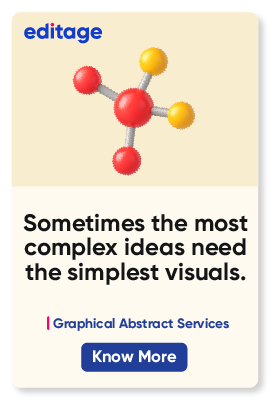Graphical abstracts or infographics: What should you use to communicate your research?

For those who are unfamiliar, a graphical abstract and an infographic are essentially the same thing.
Both are visual elements to include in a research, both seek to provide information, and both aim to improve comprehension for people who see it. Overall, they appear to be similar.
However, it is critical that individuals in the scientific or academic fields understand the distinction between a graphical abstract and an infographic, as they do not serve the same purposes and cannot be employed in the same context.
What are graphical abstracts?
A graphical abstract serves as a summary in a more visual format. This summary must offer an overview of the work that has been done in the research, but containing little or no text at all.
The end goal of a graphical abstract is that the readers can quickly grasp the message of the overall research and especially the findings. A decent graphical abstract is meant to stimulate browsing and, of course, to assist readers and students to determine quickly if the work is relevant for them or not.
What are infographics?
The term “infographic” is an abbreviation for “information graphic”. Infographics aid in the communication of complicated and extensive data in a visually appealing aesthetic.
An infographic is intended to entice readers by displaying a significant amount of data quickly, causing them to consume and assimilate more information than they would normally do if they read a good amount of written explanations.
What are the differences between graphical abstracts and infographics?
The difference between these formats is minor, yet they exist. A graphical abstract is used to present the conclusions and most important findings of a research. While an infographic is intended to give a larger narrative, it is also intended to visually tell a story about the data.
However, this is not the main difference between the two. The key distinction is that a graphical abstract contains little or no text, whereas an infographic inherently contains more textual material.
Reasons to use graphical abstracts
- Deliver your message efficiently
A graphical abstract will appear at the beginning of a paper, underneath the title and affiliations. All of these elements work together to assist the reader get to the core point rapidly and easily, allowing them to swiftly determine whether or not to read the entire thing.
- Enhance visibility
Some search engines are beginning to display graphical abstracts alongside paper titles; this means that if your research is featured in a search result, an appealing graphical abstract that communicates the key aspects of your research is likely to pique the reader’s interest.
- Promote your research
If a journal allows you to submit a graphical abstract, they will almost certainly use it to promote your research. And, clearly, having a visual asset is far more appealing than merely displaying written content.
- Use in presentations
Make a decent graphical abstract and utilize it in many circumstances. You may include it into a slide presentation or even a conference poster.
Reasons to use infographics
- Faster to grasp
According to studies, visuals are processed in the brain 60,000 times faster than words. Your readers will be far more interested in your research if they can quickly comprehend the information.
- Memorable
One of the simplest ways to ensure that readers remember information in their long-term memory is to pair it with relevant visual assets. Images, vivid colors, and numbers are far simpler to remember than big chunks of words.
- Enhanced visibility
Infographics, like graphical abstracts, are ideal for displaying on websites, social media, and search engines, where images are more likely to pique attention.
- Easy to share
Readers are more likely to share a brief infographic with a decent overview of data than an extensive research. Having your work shared is another way to boost your visibility.
Looking to make your research more impactful? Check out Editage’s Graphical Abstract Design Services and get professional support to make your research stand out.









